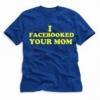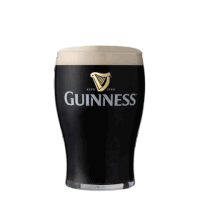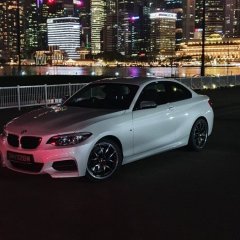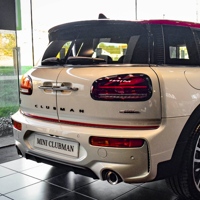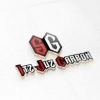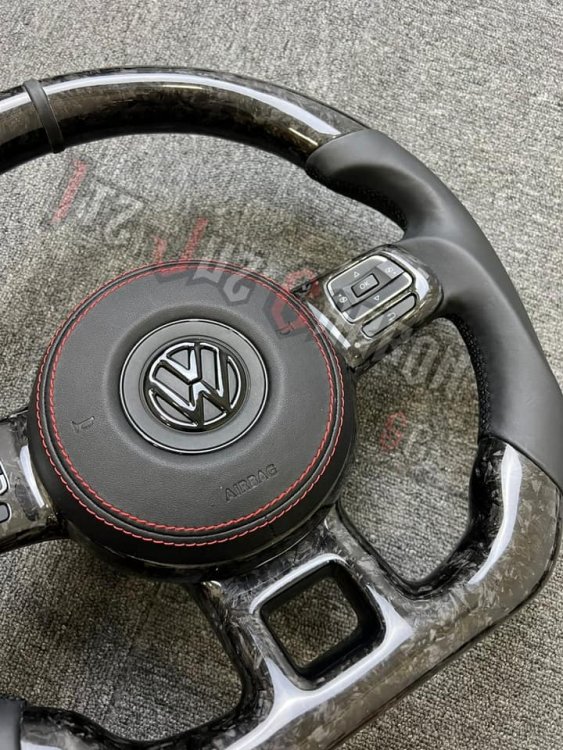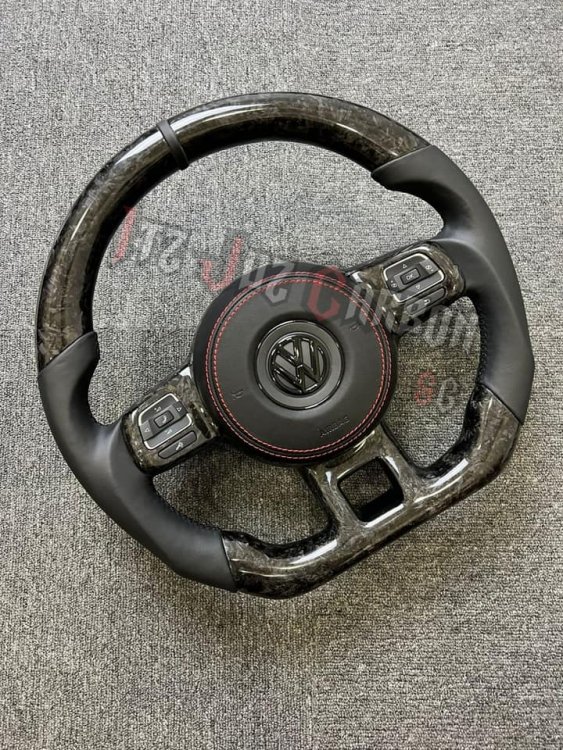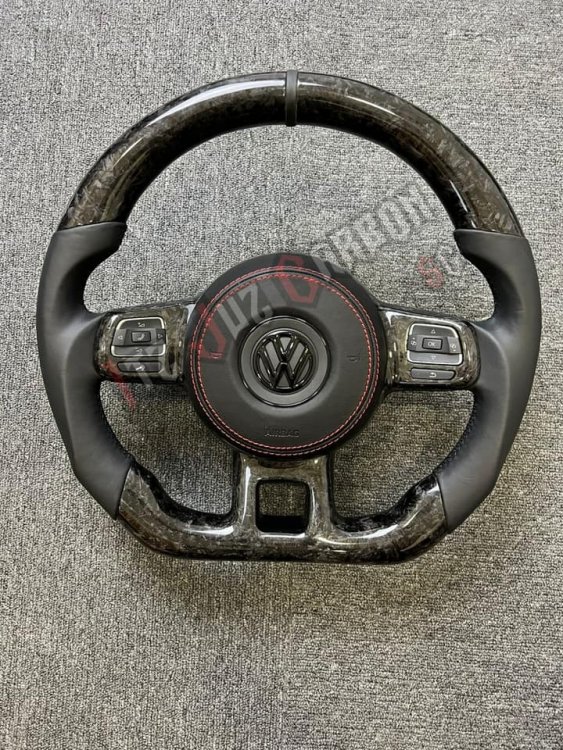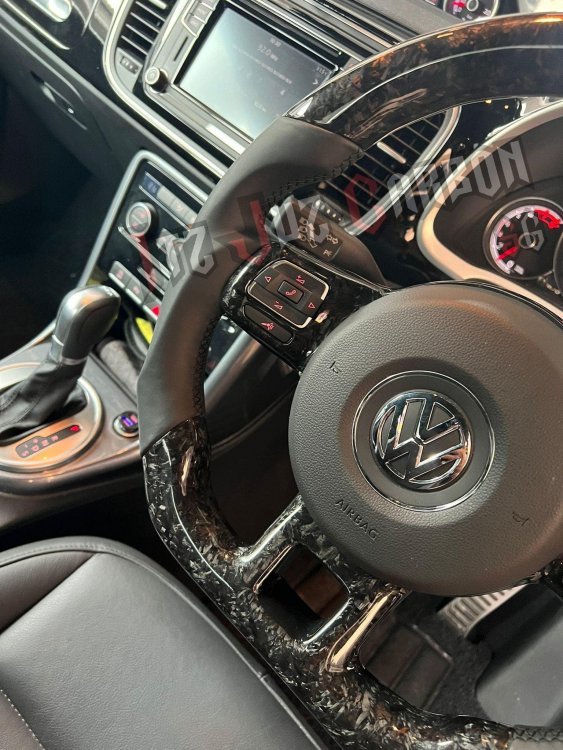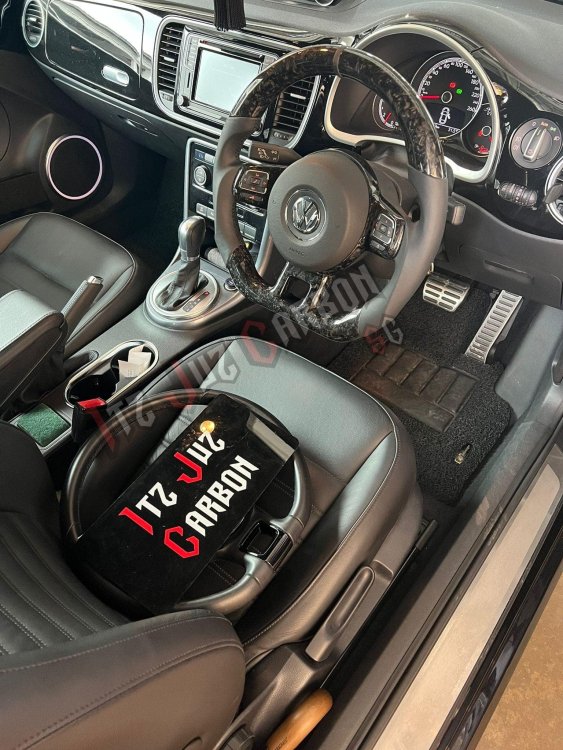Search the Community
Showing results for '"Beetle"' in topics.
-
Source: https://www.mycarforum.com/forums/forum/15-lite-amp-ez/?do=add The 1970s were an irrefutably iconic era in history. The decade gave us bell bottoms, the Disco revolution, and plenty of products that left their mark. Several items, like the Rubik’s Cube and Dungeons & Dragons, celebrate their 50th anniversary in 2024. From their humble beginnings in garages and labs, these objects from 1974 have grown to become integral parts of our everyday lives. 1. Post-It Notes In 1968, a scientist named Spencer Silver accidentally developed an adhesive that struck the balance of being weak enough to separate papers without tearing while still being strong enough to stick to an additional surface. But Silver and his company couldn’t think of a practical way to market the adhesive. For a time, it remained a fruitless idea. Everything changed when a man named Art Fry entered the picture in 1974. While singing in church, he wondered if there was a way to leave a stick-on bookmark in his hymnal without damaging it upon removal. Fry and Silver worked together to develop prototypes, and eventually, the modern-day Post-It Note was born. 2. The Rubik’s Cube There aren’t many products that both educate and entertain—but the Rubik’s Cube, developed in 1974 by a Hungarian puzzle-lover named Ernő Rubik, is certainly an exception. Initially called a “Magic Cube,” it was marketed as a tool to help children learn about three-dimensional objects, but it wasn’t actually built for that purpose. Rubik was genuinely fascinated by geometry and invented the cube to challenge himself. By doing so, he created a frenzy of fans called “cubers” and a legacy that lasts to this day. 3. The UPC Bar Code Inventor Joe Woodland came up with the idea of what is now known as the bar code while relaxing on the beach. He jotted a design in the sand and knew that it had the potential to revolutionize shopping. After going through a series of trials, prototypes, and designs, the first UPC Bar Code was scanned in a small Ohio town called Troy in 1974. The product that started it all? None other than an average pack of Wrigley’s Juicy Fruit gum. Now, Woodland’s invention is a permanent fixture in the world’s shopping experience—not to mention an absolute blessing for those who have to regularly conduct stock inventory. 4. The Silver Robotic Arm Despite ongoing debates regarding the ever-increasing use of robots and the development of AI—the latter of which is coding and programming that creates systems with human-like intellectual processes, while the former refers to the machines themselves—the importance of robotics within modern society can hardly be questioned. The year 1974 was a big one for robotics, particularly in the industrial context. It’s when MIT student David Silver invented what is now referred to as the “Silver Arm.” The device was built to simplify small-part assembly and was equipped with touch sensors and the ability to provide tactical feedback—functions that were practically unheard of in robotics. The machine paved the way for automated production. 5. Bailey’s Irish Cream If you’ve ever enjoyed a nutty Irishman or other coffee-based cocktail, chances are that you’ve had the opportunity to taste Bailey’s Irish Cream. This liqueur is iconic for being the first of its kind, a surprisingly delicious combination of the richness of cream and the powerful punch of whiskey. Though cream-based alcohol is now fairly common, this wasn’t the case back in 1974. 6. The Heimlich Maneuver Before Henry Heimlich popularized his namesake abdominal thrust maneuver—which he detailed in a 1974 article called “Pop Goes the Café Coronary”—the common response to choking was repeated strikes to the back. The Heimlich Maneuver started as a theory based on the doctor’s observations in dogs and turned out to have a high success rate in preventing fatal choking episodes. 7. Stephen King’s First Novel, Carrie Often referred to as the “King of Horror,” novelist and film director Stephen King has been taking on the frighteningly impactful genre for decades. King’s first novel, Carrie, is a story about a young girl who is relentlessly bullied and retaliates with telekinetic powers. The novel kicked off King’s long and decorated career in the horror genre in 1974. 8. The U.S. Privacy Act The U.S. Privacy Act is as important today as it was when it was enacted in 1974. Think about it like this: Imagine the government has a huge filing cabinet with folders about everyone, containing things like your name, where you live, and maybe even your medical history. The Privacy Act regulates how federal agencies collect, use, and disseminate people’s personal information. It’s not just about hiding the information either—it’s about keeping it safe and ensuring the government doesn’t commit unwarranted invasions of privacy. 9. Connect Four Connect Four, developed by the board game company Milton Bradley, debuted in 1974. It was inspired by the classic Tic-Tac-Toe; Connect Four players seek to get four chips into an uninterrupted row to secure a win. 10. Skittles Skittles was originally invented in the United Kingdom in 1974, though the confection didn’t enter the U.S. candy scene in North America until 1979. There isn’t a lot of confirmed information regarding the origins of this fan-favorite candy—rather than state the truth, the website for Skittles contains a wild tale about how the rainbow treats came from space. 11. Modern Liposuction The first documented instance of someone attempting cosmetic fat sculpting occurred back in 1921, though that method was quite painful and had horrifying results. In 1974, a father-son duo deployed an improved version of the procedure that remains the basis of modern liposuction techniques. Arpad and Giorgio Fischer used a criss-cross suctioning method that yielded far better outcomes than earlier attempts, and although they only applied this technique to the outer thighs, it remains the basis of this now-common aesthetic procedure. 12. DayQuil DayQuil has served many a person suffering from a nasty headcold since it hit shelves in 1974. It was originally known as DayCare, as it includes non-drowsy ingredients suited for daytime relief from a cold or flu. 13. The Meow Mix Jingle The cat food brand Meow Mix hit the market in 1974. That same year, the brand aired its first commercial, featuring its now-signature jingle sung by singer Linda November. 14. Kinder Surprise Eggs Kinder Surprise is an egg-shaped chocolate candy with a hollow center meant to store a small gift or prize. The egg, which debuted in 1974, is only one of a vast array of Kinder chocolate products. Though Kinder Surprise is theoretically an excellent idea, it has a rocky relationship with the United States government. In 1997, the U.S. Consumer Product Safety Commission (CPSC) banned Kinder Surprise in the United States, deeming it a choking hazard. But the treat remains well-loved in European nations like the United Kingdom. 15. The Canon “Datematic” Photography became a lot more accessible in the 1970s. In 1974, Canon developed their “Datematic” 35 mm camera. The compact camera’s main draw was its lightweight design, which manufacturers achieved by building the camera from reinforced plastic. The camera served as inspiration for future SLR cameras. 16. Dungeons & Dragons The tabletop RPG Dungeons & Dragons has been embedded in pop culture since 1974. Though the game is well-known as a benchmark in fantasy media, it didn’t begin with that intention. Dungeons & Dragons was initially meant to be a medieval combat game, with a short included guide detailing how it could also be used in a fantasy setting. This small element became its primary appeal; the game’s first run sold out within a year of its release. 17. Bold Laundry Detergent Bold, a brand of laundry detergent owned by Proctor & Gamble, was released to the UK market in 1974 as their first low-suds biological laundry detergent. It has remained a popular product ever since. 18. The Arecibo Message The Arecibo Message was transmitted via a device known as the Arecibo radio telescope. Unfortunately, though, it wasn’t a genuine attempt to contact aliens. Instead, it served as a testament to how far space technology had come. 19. People Magazine With nearly 2600 issues under its belt, People magazine is one of the most iconic pop culture news sources in the U.S. The magazine has had nearly every celebrity from Cindy Crawford to Leonardo DiCaprio adorn its cover. Its first issue hit newsstands in March of 1974. Who was plastered on the paper’s first cover? None other than actress Mia Farrow, known for her portrayal of Daisy Buchanan in that year’s film adaptation of The Great Gatsby. 20. The Volkswagen Golf Volkswagen launched its popular Golf model in 1974. The model has been through several important phases, with seven generations and over 35 million sold units worldwide. Before the Golf’s release, the Beetle dominated the Volkswagen lineup due to its reputation for both accessibility and affordability. But once the Golf hit the market, it quickly set a new standard for compact cars and demonstrated the innovative ability of the Volkswagen brand.
-
this new beetle looks nice and cute leh, got the 2 litre version with 200 bhb, not bad leh, and with 19 inch rim http://www.sgcarmart.com/news/article.php?AID=4342
- 41 replies
-
- beetle
- volkswagen
-
(and 3 more)
Tagged with:
-
So I can safely says it’s yr 1st Conti ? Yes ,the DCT is pretty good but its Not the Best,the DSG is Better . My wife owns a Beetle which is rather Low tech but still the Double Clutch realli shifts. But think ,dey are too complicated for their own good . Dey have wet & Dry Clutch version,OMG. As u may have heard ,the VW version have so many problem with the Mechantronics,u wun be amused. Generally M.B is juzz abt right ,if cross over from Sushi / Kimchi Brands. Pretty Reliable & Less Maintenance But mind u, i didnt says NO maintenance . Generally Conti are pretty Anal abt Maint Schedule ,if needs to Service MUST Service ,Mileage veri important. The 3 Row GLB are Long in Comming ,many Mercs Fan boy have oredi switch to BM cos dey dun have a 3rd Row in their Line up. Guess dey have Lose a chunk of customers especially the Young parents. Well,it’s Better Late than Never.
-
2018 Beetle 1.2L can buy bo? But with the 7 speed DSG. 🥴
- 41 replies
-
- beetle
- volkswagen
-
(and 3 more)
Tagged with:
-
Is it only me.. but the new model looks like blow-up VW Beetle? 🤔🤭
-

Cars We Don't Get to Drive in Singapore
Carbon82 replied to Carbon82's topic in General Car Discussion
-
Yes, your eyes isn't playing any trick, the "New" Niva is just a refresh of the original, which is 47 year old and still counting... another 18 year more and it will beat VW Beetle's record to be the most long life model. So what's new and make me started a thread about it? It now come with one of the most basic and standard safety features that has been around, for well, decades now: an Anti-lock Braking System (ABS). However, it still doesn't come with any airbag, not even for the driver! Its engine has also been updated to make it Euro 5 compliant. That’s quite an upgrade given the outgoing model was built to the Euro 2 standard introduced in 1996, but it’s still far behind most modern engines. In fact, Euro 5 regulations have been around since 2009 whereas Euro 6 was introduced in 2014. If everything goes smoothly, Euro 7 laws could be enacted by 2025. See below for the rest of the updates for this almost half a century old SUV...
- 19 replies
-
- 14
-
.png)
-

-
Ora good cat? Seems quite unique got mini/vw beetle vibes
-
Haha no choice I seldom watch the tv also. As @kobayashiGT say she happy can liao. Luckily for car I can still choose what I want if not I be driving vw beetle liao Same as online $1399.
- 266 replies
-
- prism
- television
-
(and 1 more)
Tagged with:
-
Haha no choice I seldom watch the tv also. As @kobayashiGT say she happy can liao. Luckily for car I can still choose what I want if not I be driving vw beetle liao Same as online $1399.
- 266 replies
-
- 1
-
.png)
-
- prism
- television
-
(and 1 more)
Tagged with:
-
still thinking what will be the ICE cars that is worth the moolah to extend coe. Some of the Beetle 1.4 Twin charge are also scrap
-
Just to update. Brought in and declared everything. Have to open up all baggage for a pretty lady (ymmv) to inspect the declared food items. Milk powder and packet food passed, only thing that had to throw away was a brand new bag of raw baby rice - think there is some ongoing campaign against some kind of beetle at the moment.
-
The Beetle's Spoiler spoil the Look.😫
-
Nice catch! But how come classic Beetle go put GT wing....😅
-
Source: https://www.motor1.com/news/684207/2024-vw-passat-debut-specs/ Volkswagen killed the Passat in the United States after the 2022MY but the midsize family car soldiered on in Europe with its more sophisticated MQB underpinnings. The Old Continent is getting a ninth generation of Wolfsburg's best-selling nameplate ever, after the Golf but ahead of the Beetle. Since the vehicle's inception in 1973, VW has delivered 30+ million units. The new B9 comes strictly as a wagon as the sedan is officially dead. Featuring revised underpinnings (MQB Evo) shared with the upcoming next-gen Tiguan and Golf Mk8 facelift, the 2024 Passat Variant is considerably larger than the old Euro-spec B8. It now stretches at 193.5 inches (4917 millimeters) in length, therefore making it a substantial 5.7 in (144 mm) longer than before. Width is up by 0.8 in (20 mm) to 72.9 in (1852 mm) while height is largely unchanged, at 59.2 in (1506 mm). As for the wheelbase, it has been elongated by 1.97 in (50 mm) to 111.8 in (2841 mm). While not revolutionary, the styling isn't evolutionary either since there are quite a few changes as VW has aligned the new Passat with the design of its electric ID models. Recently spotted without any camouflage, the ID.7 Variant looks a tad more futuristic but the similarities are easy to notice. As usual, the exterior appearance will depend on the trim level: Passat, Business, Elegance, and R-Line. Wheels up to 19 inches in size are going to be offered, along with newly developed matrix LED headlights and dynamic LEDs at the rear where a light bar has been fitted. The interior represents a complete departure from the Passat B8 since VW has eliminated most of the switchgear. You'll be accessing nearly all of the available functions from the touchscreen, which will measure a generous 12.9 inches even in the base model. At an additional cost, the infotainment can be upsized to 15 inches. A fully digital 10.25-inch instrument cluster is standard, so the German brand is saying goodbye to the good ol' analog dials that were offered on the outgoing Passat. By moving the gear selector onto the steering column, the engineers were able to free up space between the seats for extra cargo capacity in the same vein as on the ID.7. Further mirroring the electric sedan is a new switch on the left side to control the turn signals and wipers. Comfort in the front can increase by opting for the new heated, ventilated, and massaging seats with 14-way electrical adjustment. That jump in size we mentioned earlier has not only increased legroom but also the luggage compartment capacity by 1.41 cubic feet (40 liters) to 24.3 cu ft (690 l) with the rear seats up. Fold the bench and the volume jumps to 67.8 cu ft (1,920 l) or a whopping 4.9 cu ft (140 liters) more than on the previous Passat Variant. The engine lineup is comprehensive and it includes a mild-hybrid gasoline unit for the first time in the Passat's history. It's a 1.5-liter eTSI cylinder deactivation technology and 148 horsepower (110 kilowatts). Up next is a bigger 2.0 TSI with 201 hp (150 kW) in front-wheel-drive flavor and a more potent configuration with 261 hp (195 kW) and 4Motion all-wheel drive. If you'll still want a diesel in 2024, VW has got you covered with its 2.0 TDI offered in three states of tune: 121 hp (90 kW) and 148 hp (110 kW) as FWD models and 190 hp (142 kW) with AWD. All gasoline and diesel versions of the new Passat route power to the road via a seven-speed, dual-clutch automatic transmission. Then there are the plug-in hybrids marketed as "eHybrid" models. The base variant offers 201 hp (150 kW) and 258 pound-feet (350 Newton-meters) of torque whereas the more potent model pushes out 268 hp (200 kW) and 295 lb-ft (400 Nm), making it the strongest Passat money can buy. These two PHEVs get a 1.5-liter TSI, a six-speed DSG, and a 19.7-kWh battery pack providing up to 62 miles (100 kilometers) of electric range. With the new-generation Passat, VW has implemented support for DC fast-charging at 50 kW to juice up the battery from 10 to 80 percent in approximately 25 minutes. With the battery charged and a full tank of gas (11.9 gallons or 45 liters), you'll be able to drive for around 621 miles (1,000 kilometers) before having to refuel. Making its public debut next week at IAA Munich, the 2024 VW Passat is scheduled to go on sale in the first quarter of next year. It won't be built in Germany anymore as production is moving to Bratislava, Slovakia where it's going to be assembled alongside the new Skoda Superb. Unlike the wagon-only Passat, its Czech sibling will retain both liftback and wagon body styles. Czech Out Its Sister Model: 2024 Skoda Superb And Kodiaq Interior Revealed: Big Screen, Buttons, Knobs 2024 Skoda Superb Specs Revealed: Larger And With Up To 261 Horsepower
-
-
Electric bug coming. Volkswagen Beetle to be reborn as a pure electric four-door https://www.autocar.co.uk/car-news/new-cars/volkswagen-beetle-be-reborn-pure-electric-four-door A revolutionary new Volkswagen Beetle is under consideration and, if given the green light by VW chiefs, it will adopt a battery-powered electric powertrain. It will also move away from its trademark two-door bodystyle to a four-door arrangement and could even use the rear-wheel-drive characteristics of the original ‘Type 1’ Beetle of 1945 (below picture). The model would be based on VW’s flexible electric vehicle architecture, MEB, which will underpin the car maker’s range of electric models under its new ID badge. The first of these to arrive will be the ID hatchback next year. VW has already confirmed that the current Beetle, which has been on sale since 2011 and is the second generation since the iconic car was revived as a front-wheel-drive car in 1997, will not be directly replaced once production ends next year. VW UK has already stopped taking orders. However, VW boss Herbert Diess is keen to introduce a greater number of “emotional” cars to VW’s range alongside its more standard models. As the firm’s most storied nameplate, the Beetle is considered a strong contender for this role. The first “emotional” model will be the ID Buzz microbus (below). Inspired by the classic camper van, it is scheduled to arrive in 2022, before which VW will launch its more mainstream electric vehicles. In additionto the ID hatchback, there will be production versions of the ID Crozz SUV and ID Vizzion saloon, both previously seen as concepts, and a larger electric SUV is also due. VW design boss Klaus Bischoff said the company must focus on producing the bigger-selling electric cars before making a decision on a Beetle EV and other models: “Our duty is to get the volume [iD] models under way. These cars have super-complicated technology and if you do too much, it’s an overload. Then we [can] move into more exotic cars and the field of emotion.” On the possibility of a zero- emissions Beetle, Bischoff said the packaging advantages of the MEB platform could enable VW to broaden the appeal of the model by offering more space and comfort while retaining the iconic shape: “The Beetle of today is a very attractive two-door coupé or convertible, but it is limited in the amount of cars that it can sell because it’s a niche. “If you look at MEB, the shortest wheelbase [possible] is the ID [hatchback]. If you took that and did the Beetle on it, you have plenty of room so there’s no compromise in functionality any more. So it could be a very attractive car.” Bischoff confirmed that he has already made a sketch of how a four-door Beetle on the MEB platform might look, but added it would be two or three years before a decision to approve such a car for production would be taken. Although the Beetle EV would be derived from the ID hatchback’s underpinnings, Bischoff did not think there would be a danger of the two models competing for the same customers: “It has always been the culture at VW that there’s enough room for two or even three [in the same segment].” Diess has dropped hints about an electric Beetle in the past: “If we wanted to do a Beetle EV, it would be much better than today’s model, much closer to history, because it could be rear-wheel drive.” Referring to the MEB tool kit providing a perfect basis for ‘emotional’ concepts, Diess said: “We have a good chance on the electric side. You can do derivatives efficiently. We have a very flexible platform. We can do nice things: rear-wheel drive, front-wheel drive or all- wheel drive.” Diess, who was appointed boss of the entire VW Group earlier this year, described the group’s strategy as “the most far-reaching electrification initiative in the car industry”. Steve Cropley: Beetle BEV - would it work? An electric Beetle looks promising and plausible on several grounds. First, given the global successes the new-gen Mini and latter-day Fiat 500 have become, you can understand why VW should want to do the same with its best-remembered model. The fact that the first and second attempts at a ‘new’ Beetle failed must give VW pause, but I reckon Klaus Bischoff is quite right that using rear-wheel drive for this third proposal would give it a better chance. And the residual greenness of electric underbits make a better link with the past than the most recent ‘new’ Beetle, which tried too hard to be a cheap Porsche. To me, it’ll be about styling success. If Bischoff and his team of designers can be as effective at recalling the original Beetle as they have been with the ID Buzz recalling the old Kombi van, I could see an electric edition becoming a real hit.
- 25 replies
-
- 1
-

-
- 2006
- facelifted
- (and 7 more)
-
When he does his walks, got bodyguards one or not huh? and does he still drive the merc now? his daughter drove a beetle right?
-
2006 Facelifted New Beetle - First Photos May 23, 2005 source: Volkswagen of America Volkswagen of America, Inc. revealed its
- 25 replies
-
- 2006
- facelifted
- (and 7 more)
-
Did not realize that vw beetle has a 1.2T...... The body is pretty heavy and bulbous with many uneconomical curves.. How to drive it properly... The VW beetle play brake with the cam car?
-
There’s a reason why it’s loud and limited to those who knows what it is .. lol to an untrained eye it’s just a really expensive fast beetle
-
Mr Andrew, Volkswagen Beetle. Mr Andrew joined us in our first Facebook live and customized a Forged carbon steering wheel for his Volkswagen Beetle. He wanted it to be slightly thicker because he felt that the stock steering wheel was slightly thin for him. Of course, we delivered his request because we aim to provide the best for our consumers 🙂 We were also giving away Like N Share vouchers during our facebook live, he done so and as promised, collected the $50 cash voucher upon his installation to use it on his next purchase 🙂 Like us on our >> facebook page << and remember to turn on the notification bell so you will be notified when we go live! Attractive lucky draw prizes to be won and lower prices! Do stay tuned! Thank you for all of your support and trust! Beautifully done. After installation:
- 424 replies
-
- carbon steering
- carbon fibre
-
(and 7 more)
Tagged with:
-
There is a one of version though... World's fastest VW Beetle goes 205 MPH The vehicle, dubbed the Beetle LSR -- that stands for Land Speed Record -- has the same 2.0-liter four-cylinder engine block as a 2014 Beetle Turbo R-Line. But much of the rest of the engine was modified by California's THR Manufacturing, VW spokesman Mark Gillies said. The company installed different turbochargers and pistons, and made other changes to give the 210 horsepower car a staggering 543 horsepower. Official speed record rules limit how much a car can be altered and still be considered a Beetle, Gillies explained. That means that engineers couldn't make extensive changes to the body to improve the bulbous Beetle's aerodynamic profile. But they did make a few tweaks. The suspension was modified so the car sits lower to the ground, and a front air dam was added to help prevent air from going underneath and lifting the car at high speeds. The interior was replaced with a roll-cage and racing seat, and the standard tires were replaced with high-speed racing tires. Parachutes were also attached to help slow the car. The Beetle averaged 205 miles per hour over a one mile stretch, after first building up speed. At one point, it even got to 208 miles an hour. Preston Lerner, a contributing editor for Automobile Magazine, piloted the car. "We had enough power to go even faster if the salt hadn't been so sketchy," he said in a statement. "But seeing 208 miles per hour briefly on the digital readout was an experience I'll never forget." The previous "Word's Fastest Beetle" was a 1955 model that went almost 175 miles an hour in 1988.
- 41 replies
-
- 5
-

-
- beetle
- volkswagen
-
(and 3 more)
Tagged with:
-
Iconic Volkswagen Beetle Ends Production Herndon, VA — After its multi-generational run as a brand mainstay and global automotive phenomenon, the Volkswagen Beetle is ending production. The final car produced by Volkswagen de Mexico’s Puebla plant—a Denim Blue coupe—will live on display at Volkswagen’s local museum in Puebla as a lasting tribute to the automobile’s rich and storied heritage. Volkswagen de Mexico will soon shift resources to produce a North American market-focused compact SUV that fits in the manufacturer’s lineup below the Tiguan. “It’s impossible to imagine where Volkswagen would be without the Beetle,” said Scott Keogh, President and CEO, Volkswagen Group of America. “From its first import in 1949 to today’s retro-inspired design, it has showcased our company’s ability to fit round pegs into square holes of the automotive industry. While its time has come, the role it has played in the evolution of our brand will be forever cherished.” Introduced to America as the Type 1, Volkswagen sold nearly five million Beetles in the United States, and a worldwide total of 21.5 million cars. In 1998, the New Beetle—an early automotive adopter of “modern retro” design language—re-introduced the familiar silhouette to a new generation of drivers, and sold more than 1.2 million cars between 1998 and 2010. In 2011, the third, and current generation of Beetle went on sale in the U.S. as a 2012 model, and more than 500,000 have been built since. Sold in both coupe and convertible variants, the second- and third-generation of Beetles have collectively been produced in 23 different exterior colors, 32 interior trims, 13 varying engine configurations and 19 special editions, including the Dune, Denim, Coast and #PinkBeetle. All second- and third-generation Beetles have been built by Volkswagen de Mexico, Puebla, and have been sold in 91 markets worldwide. The end of Beetle production will allow Puebla’s resources to shift production to a new compact SUV tailored to the North American market, slotting into the lineup below the Tiguan. After its celebration, the final Beetle (No. 5961 unit of the Final Edition) will be displayed at Volkswagen’s museum in the city of Puebla, Mexico. The last cars built for the U.S., a pair of Kings Red vehicles with custom dashes, keys and quilted seats, will join Volkswagen of America’s collection of historic vehicles.
- 41 replies
-
- 4
-

-
- beetle
- volkswagen
-
(and 3 more)
Tagged with:
-
Presea still quite ok since the front and rear have differ contour on the metal panel and lights. The other close one would be the 1st gen New Beetle.



